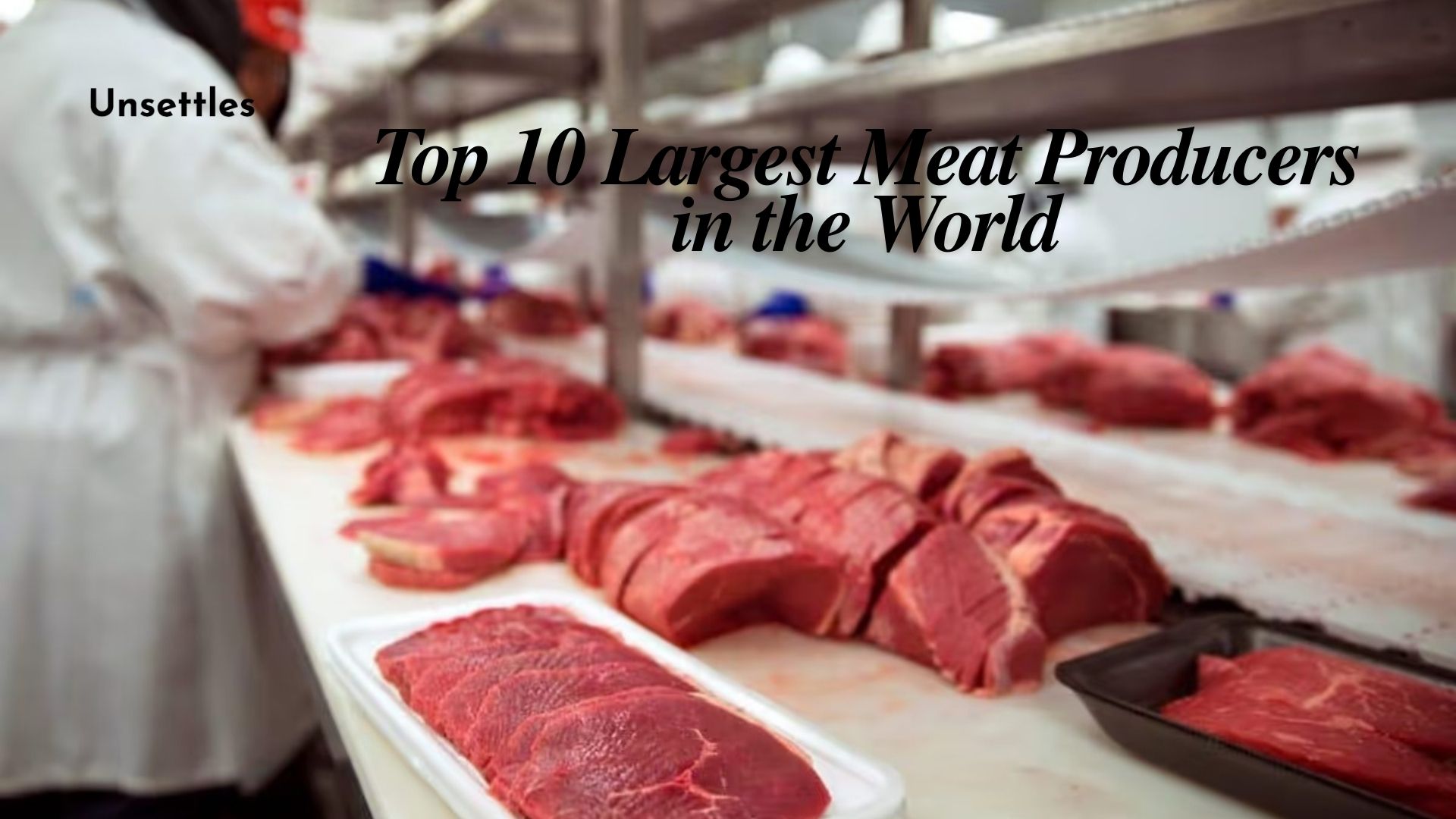Largest Meat Producer Countries: The global appetite for meat continues to grow, with consumption increasing not only in countries where it has always been a staple but also in regions where vegetarian diets once dominated. Meat offers a rich variety of flavors and cooking possibilities, from grilling to slow roasting, making it a favorite food for millions around the world. In fact, the data from 2023 highlights a staggering rise in meat consumption—quadrupling since 1961—with a current annual demand of approximately 357 million tons. Below, we explore the top 10 meat-producing countries and what drives their success in this booming industry.
Leading Meat-Producing Countries
Brazil
Producing an impressive 7.5 million metric tons of meat each year, Brazil stands as the world’s leading meat producer. The country benefits from vast expanses of pastures, a favorable climate, and a thriving agricultural sector. Brazil’s approach combines natural resources with advanced farming techniques, focusing on sustainable livestock practices and innovative feed technologies. This has made Brazilian beef a favorite both domestically and internationally. Largest Meat Producer Countries
United States
With 5.8 million metric tons of meat produced annually, the United States is a powerhouse in the global meat industry. Large-scale farms, excellent breeding programs, and cutting-edge processing facilities contribute to the country’s dominance. The U.S. meat industry places a high priority on hygiene, quality control, and technological advancements, leading to high productivity and a strong export market.
Australia
Known for its high-quality beef and lamb, Australia produces 2.2 million metric tons of meat annually. The country’s success is rooted in sustainable farming practices, ensuring that livestock are raised ethically and with environmental consciousness. Australia’s rigorous food safety regulations and emphasis on quality have earned it a reputation for premium meat products worldwide. Largest Meat Producer Countries
Canada
Canada produces 1.5 million metric tons of meat each year, focusing on animal welfare, environmental sustainability, and top-tier product quality. Strict animal welfare standards are enforced, resulting in healthier livestock and better meat. Canada’s commitment to sustainability, including eco-friendly land management and technology-driven agriculture, appeals to a growing number of environmentally conscious consumers.
India
India’s meat production stands at 1.3 million metric tons, driven by a large domestic demand for buffalo, chicken, and goat meat. Traditional farming methods are still widely used, blending old practices with new innovations in breeding and animal care. The Indian government’s focus on modernizing agriculture has further boosted the sector, creating a unique mix of tradition and technology. Largest Meat Producer Countries
Argentina
Argentina’s meat industry produces 0.9 million metric tons annually, with a focus on pasture-based farming. Free-range cattle graze on the lush grasslands of the Pampas, producing leaner and more flavorful meat. The country’s favorable climate and expertise in ranching have made Argentine beef a sought-after product worldwide.
Germany
Germany produces 0.8 million metric tons of meat annually, with a focus on pork and poultry. The country is known for its precision in agriculture, using advanced methods to improve productivity and animal care. Strict regulations ensure the highest standards of food safety and animal welfare, making German meat products a trusted choice both domestically and internationally. Largest Meat Producer Countries
Netherlands
Despite its small size, the Netherlands produces 0.7 million metric tons of meat each year, largely focusing on hog and poultry farming. Intensive farming techniques and advanced technology allow the country to maximize yields while maintaining high standards of animal welfare. The Dutch meat industry is a model of efficiency, making it a significant player in the global market.
New Zealand
Producing 0.6 million metric tons of meat annually, New Zealand is renowned for its grass-fed beef and lamb. Free grazing on rich pastures under strict ethical standards has given New Zealand a reputation for producing high-quality, flavorful meat. The country’s emphasis on traceability and quality throughout the supply chain has earned it a loyal following among top chefs and international buyers. Largest Meat Producer Countries
Spain
Rounding out the top 10 is Spain, with 0.5 million metric tons of meat production per year. Known for its rich culinary traditions, Spain focuses heavily on pork and beef, maintaining high standards of care from animal husbandry to processing. The country’s dedication to quality has helped it build a strong presence in both local and international markets.
Conclusion
The global demand for meat continues to rise, driven by a growing fascination with diverse meat dishes and culinary possibilities. These top 10 meat-producing countries are not only meeting the demand but are also investing heavily in the latest technologies to refine production and ensure quality. Balancing supply with demand while maintaining high standards will remain crucial as the meat industry continues to evolve. Largest Meat Producer Countries
FAQs Largest Meat Producer Countries
What makes Brazil the largest meat producer in the world?
Brazil’s dominance in meat production comes from its vast natural pastures, favorable climate, and investment in innovative farming practices. These factors combine to create a highly efficient and large-scale meat production industry.
How does the U.S. maintain such a strong position in the meat market?
The United States excels due to its large-scale farms, advanced breeding programs, and state-of-the-art processing facilities that prioritize quality and safety. Additionally, ongoing investments in agricultural technology boost overall productivity.
Why is Australian meat highly regarded internationally?
Australia’s focus on sustainable and ethical farming, along with stringent food safety regulations, ensures high-quality meat. Grass-fed beef and lamb are particularly valued for their superior taste and health benefits.
What is unique about Argentina’s approach to meat production?
Argentina is known for its extensive pasture-based farming, where cattle graze freely on natural grasslands. This results in leaner, tastier meat, which has become synonymous with Argentine beef’s high quality.
How does India balance traditional farming with modern techniques in meat production?
India blends traditional animal husbandry methods with modern innovations in breeding, animal care, and feed production. The government’s push towards modernization helps maintain quality while respecting longstanding agricultural practices.
